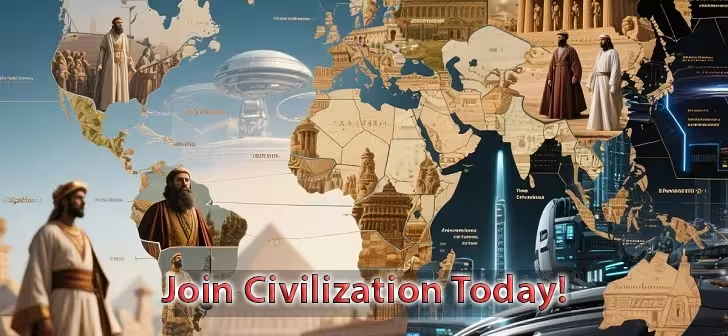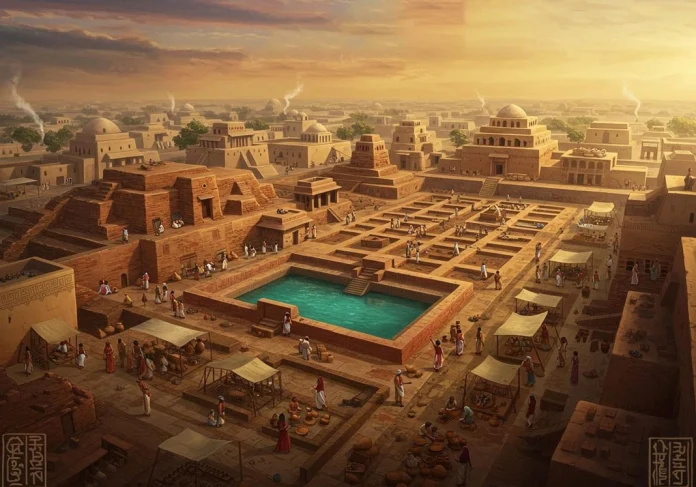When we think of the ancient world, images of towering pyramids, Greek philosophers, and Roman legions may come to mind. Yet, long before these iconic civilizations rose to prominence, a highly advanced society thrived in South Asia — the Indus Valley civilization. Flourishing between 2600 BCE and 1900 BCE, this remarkable culture is celebrated for achievements in urban planning, architecture, and sanitation systems that were centuries ahead of their time.
In this article, we’ll explore how the Indus Valley civilization mastered the art of city design, developed an unparalleled drainage network, and set the gold standard for cleanliness in the ancient world.
A Civilization Ahead of Its Time
The Indus Valley civilization, also known as the Harappan civilization, stretched across what is now Pakistan and northwest India. Major cities like Harappa, Mohenjo-Daro, and Dholavira were not random settlements — they were meticulously designed urban hubs. Archaeological evidence reveals that city planners applied standardized measurements, grid-based layouts, and innovative engineering solutions.
Unlike many ancient societies where cities grew haphazardly, the Indus Valley civilization constructed cities with clear zoning. Residential, commercial, and administrative areas were carefully separated, making these cities some of the earliest examples of organized urban landscapes.
Grid Layout and Standardization
One of the most astonishing aspects of the Indus Valley civilization was its grid-based city planning. Streets intersected at right angles, creating a network that optimized traffic flow and accessibility. This wasn’t just for aesthetics — it showed a deep understanding of geometry and spatial efficiency.
Buildings, bricks, and even city blocks were constructed using standardized dimensions. Archaeologists have found evidence that bricks used in Harappan cities followed a ratio of 1:2:4, indicating a high degree of regulation in construction. This level of uniformity is comparable to modern building codes and speaks volumes about the centralized planning authority.
The World’s First Urban Sanitation System
If there is one innovation that sets the Indus Valley civilization apart, it’s their sanitation infrastructure. While many ancient cities lacked even basic waste management, Harappan cities boasted one of the earliest known urban drainage systems.
Key Features of Their Sanitation System:
- Covered Drains. Almost every street had a covered drainage channel, ensuring waste water was removed efficiently.
- Individual Bathrooms. Many houses had private bathing areas connected to the drainage system, an unheard-of luxury in the ancient world.
- Public Wells. Fresh water was readily available through public wells strategically placed throughout the city.
- Soak Pits and Septic Tanks. Waste from homes passed through soak pits or brick-lined cesspits, keeping streets and neighborhoods clean.
The fact that these systems served entire cities shows not just engineering skill, but also a societal commitment to public health and hygiene.
Mohenjo-Daro: A Sanitation Marvel
Mohenjo-Daro, one of the largest cities of the Indus Valley civilization, is a shining example of their urban brilliance. Excavations reveal a network of brick-lined sewers running beneath the streets. The Great Bath, a large public water tank, suggests that hygiene wasn’t merely practical — it may have held cultural or ritual significance.
This emphasis on sanitation is striking because, at the same time, other civilizations often relied on open waste disposal. The Harappans’ cleanliness would have significantly reduced the spread of disease and improved quality of life.
Social Organization and Civic Responsibility
Such advanced urban planning was impossible without strong governance and a collective sense of civic responsibility. The Indus Valley civilization may not have left behind grand palaces or towering statues like Egypt or Mesopotamia, but their orderly cities reveal an equally impressive achievement: a society where infrastructure served the people’s needs rather than glorifying rulers.
Interestingly, no evidence of a single monarch has been found. Instead, the uniformity across cities suggests a decentralized yet cooperative form of governance. City planning likely involved local councils or administrators dedicated to maintaining order, sanitation, and trade.
Influence on Modern Urban Design
Modern architects and city planners still marvel at the efficiency of the Indus Valley civilization’s layouts. In fact, many of the principles used in Harappan cities — such as zoning, standardized construction, and integrated sanitation — are essential components of sustainable urban design today.
Some key takeaways modern cities can learn from them include:
- Integrated Planning – Housing, water supply, and waste disposal should be designed as one system, not separate afterthoughts.
- Public Health Prioritization – Sanitation should be a central aspect of city planning to ensure population well-being.
- Environmental Adaptation – Harappans built their cities to withstand seasonal flooding, something modern coastal cities could learn from.
The Mystery of Their Decline
Despite its brilliance, the Indus Valley civilization eventually declined around 1900 BCE. Scholars debate the reasons — climate change, river shifts, overuse of resources, or invasions may have played a role. Whatever the cause, their cities were abandoned, and much of their knowledge was lost for millennia.
Yet, the ruins of Mohenjo-Daro, Harappa, and other sites stand as enduring reminders that sophisticated urban life existed thousands of years before the skyscrapers of New York or the boulevards of Paris.
Legacy of the Indus Valley Civilization
Today, the Indus Valley civilization remains a subject of fascination for archaeologists, historians, and urban planners alike. Its silent streets, precise layouts, and intricate drains tell a story of a people who valued order, cleanliness, and collective prosperity.
Their achievements challenge the idea that ancient life was always dirty, chaotic, or primitive. On the contrary, the Harappans show us that civilization is defined not just by monuments, but by how well a society cares for its citizens’ everyday needs.
Final Thoughts
The Indus Valley civilization was a beacon of urban innovation long before the modern era. Their commitment to clean water, proper waste disposal, and organized city planning was unmatched for thousands of years. In many ways, they were not just an ancient civilization — they were pioneers of public health, environmental design, and sustainable living.
In our rapidly urbanizing world, the Harappans’ legacy serves as both an inspiration and a challenge: to design cities that are as functional, healthy, and harmonious as those built over 4,000 years ago.




